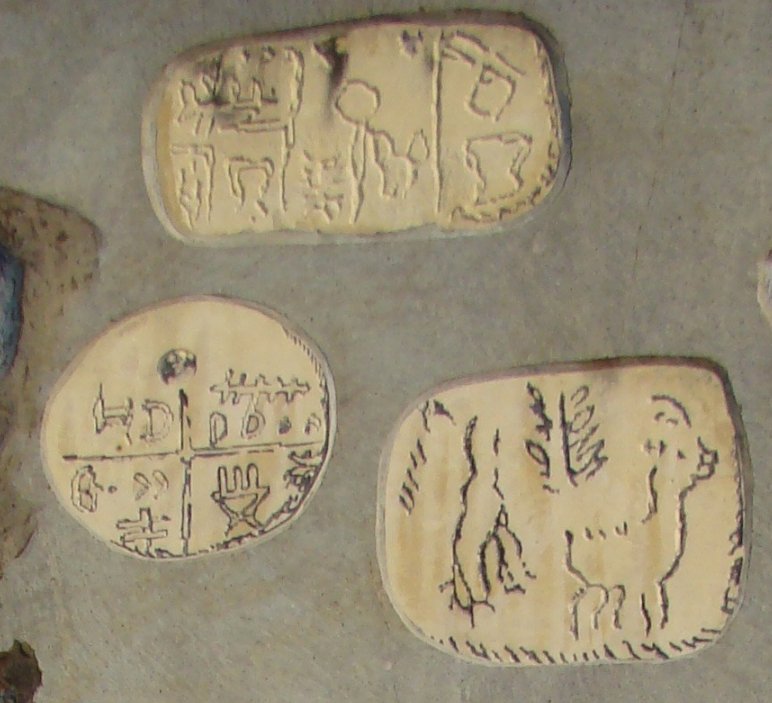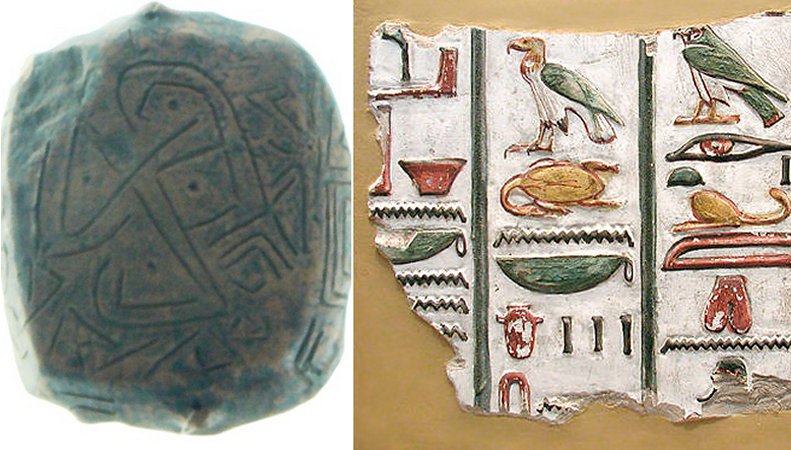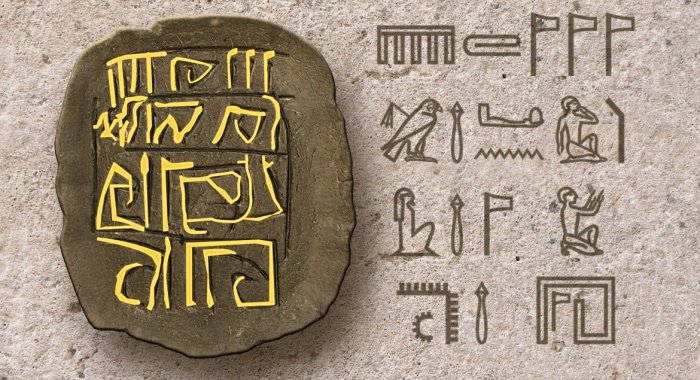Script On Gradeshnitsa Tablets May Pre-Date Egyptian Hieroglyphs
Ellen Lloyd - AncientPages.com - Can the nearly 7,000-year-old Gradeshnitsa Tablets offer evidence of one of the world's oldest human writing? Are the carved signs and symbols on the tablets merely decorations or an unknown ancient language?
Monument for the Neolithic Tărtăria tablets , dated to 5500-5300 BC and discovered in 1961 at Tărtăria , Alba County, Romania by the archaeologist Nicolae Vlassa . The clay tables are associated with the Turdaş-Vinča culture and the Vinča symbols on them predate the proto- Sumerian pictographic script. The monument has been created near the discovery location. Monument near the site. Translation of the inscription: Tărtăria 5500 BC: The first written message in human history. Image credit: Țetcu Mircea Rareș - CC BY-SA 3.0
Those who examined the Gradeshnitsa tablets concluded the engravings were identical to the hieroglyphic script found on ancient Egyptian tablets and pyramid texts.
The most controversial theory suggests the Gradeshnitsa tablets from Old Europe predate Egyptian hieroglyphs by at least two millennia! Did ancient Egyptian inherit the knowledge of hieroglyphs from ancient European civilizations?
Similarities Between The Gradeshnitsa tablets And Tartaria Tablets
The Gradeshnitsa tablets, dated around 5,000 BC, were unearthed in 1969 near the village of Gradeshnitsa in the Vratsa Province of northwestern Bulgaria. The inscribed tablets are striking, similar to the signs on the controversial Tartaria tablets.
As discussed previously on Ancient Pages, the Tartaria tablets discovered in Romania are "covered with pictographic writing are extraordinary because they raise the possibility that writing in the Danube basin predated the earliest Sumerian cuneiform and Egyptian hieroglyphics."'
Left: A copy of the backside of the Gradeshnitsa tablet, exhibited in the Vratsa History Museum. Credit: Vassia Atanassova - Spiritia - Right: Hieroglyphs from the tomb of Seti I. Credit: Jon Bodsworth, Public Domain
Was a very similar language used by ancient people who lived in Bulgaria at the same time?
Some 7,000 years ago, the sophisticated Chalcolithic civilization of Southeast Europe left a legacy that is largely forgotten today. Though they lived a nomadic lifestyle, these people possessed good metallurgical technology knowledge and left behind some remarkable ancient artifacts offering evidence of their skills.
According to scientists, the Chalcolithic civilization of Southeast Europe was connected with people living in other parts of the continent and the rest of the Old World. Studies of different kinds of pottery scattered throughout the region reveal extensive trading and interaction between these ancient people.
The unified Chalcolithic cultures can be traced back to the beginning of the Neolithic. The civilization was divided into various centers, and people built small villages and settlements.
In time the cultures expanded, and their settlements grew in size and number. Today, the mysterious Vinca culture, famous for creating outstanding figurines and script scholars still struggle to decipher, flourished from 6000 BC to 3000 BC on the banks of the Danube river.
The Vinca was by no means a primitive ancient culture. Some of the largest Vinca sites in the 5th millennium were larger than those of Minoan and Mycenaean.
Did Ancient Egyptians inherit Knowledge Of The Hieroglyphs From Old Europe?
Excavations at ancient sites have provided us with historical information about the fascinating Chalcolithic civilization of Southeast Europe. Near Provadiya and Varna in Northeast Bulgaria, we can find Provadiya – Solnitsata ("The Salt Pit") Settlement Mound. This salt pit mound appears to have been Europe's oldest town. Putting their settlements and daily life aside, the most intriguing aspect of these cultures revolves around their languages and scripts.
Little is known about the Gradeshnitsa tablets currently preserved in the Vratsa Archeological Museum of Bulgaria, and scholars cannot determine if they offer evidence of old writing.
Is it possible the script on the Gradeshnitsa tablets is older than the Egyptian Hieroglyphs? Credit: The Institute of Transcendent Science
Steven Roger Fischer, former director of the Institute of Polynesian Languages and Literatures in Auckland, New Zealand "the current opinion is that these earliest Balkan symbols appear to comprise a decorative or emblematic inventory with no immediate relation to articulate speech."
According to the Institute of Transcendent Science, examinations of the Gradeshnitsa tablets reveal something intriguing. Studies show the script found on the Gradeshnitsa tablets is an Early-Thracian version of this hieroglyphic script we have discovered in Egypt.
The Institute of Transcendent Science states, "the Script used in the engravings upon the Tablet of Gradeshnitsa, found in the land of Ancient Thrace (present-day Bulgaria) and the Scripts used in similar tablets and the pyramid texts, found in Ancient Egypt, represent one and the same hieroglyphic script."
It has led scholars to speculate that ancient Egyptians may not have been the first to use hieroglyphs. This finding suggests that hieroglyphic script originated from ancient Thracians, present-day Bulgaria. This writing knowledge could have been transferred and introduced in ancient Egypt.
Ancient Pages wrote earlier that "more and more evidence confirms a very brave thesis, that the Balkan Peninsula, rather than ancient Mesopotamia, is the cradle of our civilization.
The evidence of a little-known culture preceding Egyptian and even Sumerian culture has been attracting the attention of researchers, turning everything we know about antiquity upside down."
What if the cradle of civilization should be sought in Old Europe and not Mesopotamia?
Written by Ellen Lloyd – AncientPages.com
Updated on March 7, 2023
Copyright © AncientPages.com All rights reserved. This material may not be published, broadcast, rewritten or redistributed in whole or part without the express written permission of AncientPages.com
Expand for referencesMore From Ancient Pages
-
 Neanderthals Of The Mediterranean Areas Became Extinct But Not Because Of Climate
Archaeology | Jul 20, 2020
Neanderthals Of The Mediterranean Areas Became Extinct But Not Because Of Climate
Archaeology | Jul 20, 2020 -
 Evidence Of Hallucinogenic Drug Use During Bronze Age Ceremonies Found
Archaeology | Apr 6, 2023
Evidence Of Hallucinogenic Drug Use During Bronze Age Ceremonies Found
Archaeology | Apr 6, 2023 -
 Ymir – Primordial Norse Giant Whose Body Parts Formed The World
Myths & Legends | Apr 5, 2018
Ymir – Primordial Norse Giant Whose Body Parts Formed The World
Myths & Legends | Apr 5, 2018 -
 Massive Bronze-Age Settlement Discovered Underwater in Greece
News | Sep 1, 2015
Massive Bronze-Age Settlement Discovered Underwater in Greece
News | Sep 1, 2015 -
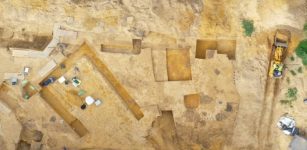 Unusual Mini Temples Discovered In Ancient Roman Camp In Haltern, Germany
Archaeology | Nov 16, 2023
Unusual Mini Temples Discovered In Ancient Roman Camp In Haltern, Germany
Archaeology | Nov 16, 2023 -
 Forgotten And Overgrown Step Pyramid Of Koh Ker – Ancient Memory Of The Khmer Empire
Featured Stories | Apr 19, 2017
Forgotten And Overgrown Step Pyramid Of Koh Ker – Ancient Memory Of The Khmer Empire
Featured Stories | Apr 19, 2017 -
 Did Captain Robert Jenkins’ Ear Start A War That Lasted 9 Years?
Ancient History Facts | Jun 24, 2017
Did Captain Robert Jenkins’ Ear Start A War That Lasted 9 Years?
Ancient History Facts | Jun 24, 2017 -
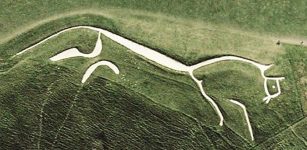 Mystery Of Prehistoric Gigantic Hill Figures Of England
Featured Stories | Sep 20, 2018
Mystery Of Prehistoric Gigantic Hill Figures Of England
Featured Stories | Sep 20, 2018 -
 Odd Ancient Dwellings Of The Snake People – American-European Connection Part 1
Featured Stories | Sep 6, 2020
Odd Ancient Dwellings Of The Snake People – American-European Connection Part 1
Featured Stories | Sep 6, 2020 -
 First Peoples’ Early Migration To Australia – Influenced By Evolving Landscapes
Archaeology | May 6, 2024
First Peoples’ Early Migration To Australia – Influenced By Evolving Landscapes
Archaeology | May 6, 2024 -
 Roman glass-making furnaces discovered in Egypt’s Delta
Civilizations | Aug 25, 2015
Roman glass-making furnaces discovered in Egypt’s Delta
Civilizations | Aug 25, 2015 -
 Fragarach: Supernatural Sword That Controlled Winds, Cut Through Wood, Metal And Bricks In Irish Myths And Legends
Celtic Mythology | May 14, 2020
Fragarach: Supernatural Sword That Controlled Winds, Cut Through Wood, Metal And Bricks In Irish Myths And Legends
Celtic Mythology | May 14, 2020 -
 Diyu – Terrible Chinese Hell And Judgement Of God Yama
Chinese Mythology | Dec 18, 2018
Diyu – Terrible Chinese Hell And Judgement Of God Yama
Chinese Mythology | Dec 18, 2018 -
 Vikings Filed Their Teeth For Unknown Reasons
Featured Stories | Mar 2, 2016
Vikings Filed Their Teeth For Unknown Reasons
Featured Stories | Mar 2, 2016 -
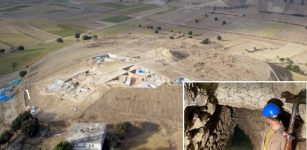 3,000-Year-Old Wooden Structure Found In Hittite Tunnel Mentioned On Cuneiform Tablets
Archaeology | Sep 2, 2023
3,000-Year-Old Wooden Structure Found In Hittite Tunnel Mentioned On Cuneiform Tablets
Archaeology | Sep 2, 2023 -
 Archaeological Discovery Of “Once-In-A-Lifetime” Medieval Gold Necklace In Britain
Archaeology | Dec 6, 2022
Archaeological Discovery Of “Once-In-A-Lifetime” Medieval Gold Necklace In Britain
Archaeology | Dec 6, 2022 -
 Lost Laodicea Temple And Seleucid Relics – Archaeological Search Continues
Archaeology | Jun 29, 2020
Lost Laodicea Temple And Seleucid Relics – Archaeological Search Continues
Archaeology | Jun 29, 2020 -
 DNA Reveals Unique Ancestry Of Inhabitants Of The Angolan Namib Desert
DNA | Oct 3, 2023
DNA Reveals Unique Ancestry Of Inhabitants Of The Angolan Namib Desert
DNA | Oct 3, 2023 -
 Mystery Of Monte Albán – Ancient City ‘At The Foot Of The Heavens’ Built By The Zapotecs
Civilizations | Apr 22, 2016
Mystery Of Monte Albán – Ancient City ‘At The Foot Of The Heavens’ Built By The Zapotecs
Civilizations | Apr 22, 2016 -
 Ancestral Home Of All Humans Revealed Through World’s Largest Genome Reconstruction Of Our Ancestors
Archaeology | Jan 3, 2023
Ancestral Home Of All Humans Revealed Through World’s Largest Genome Reconstruction Of Our Ancestors
Archaeology | Jan 3, 2023

